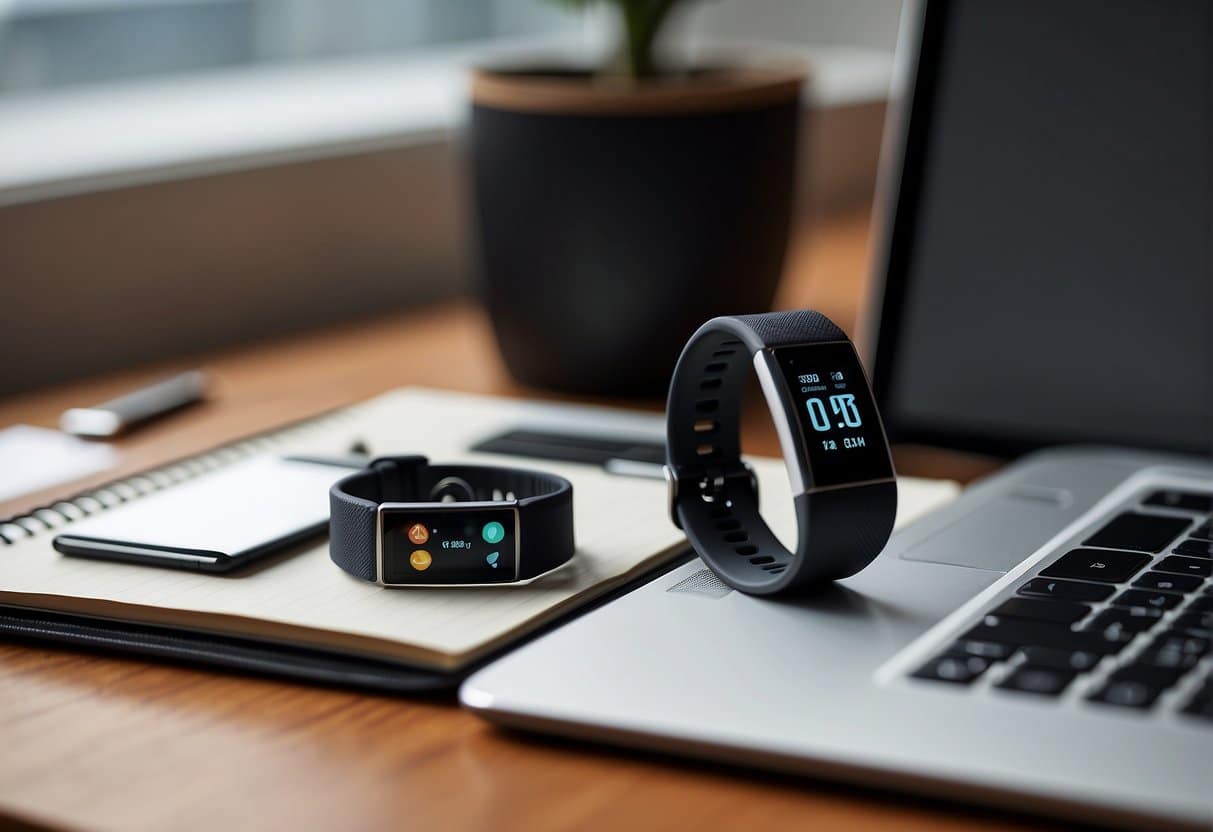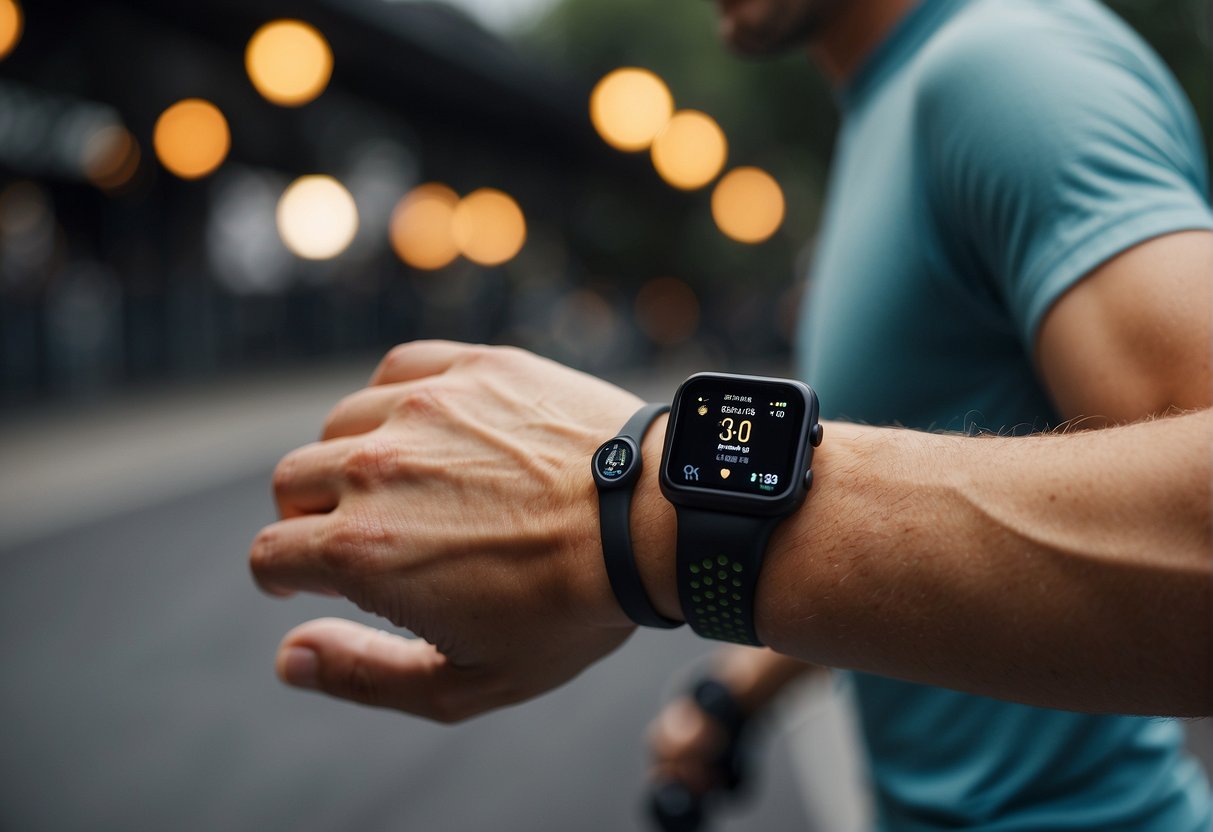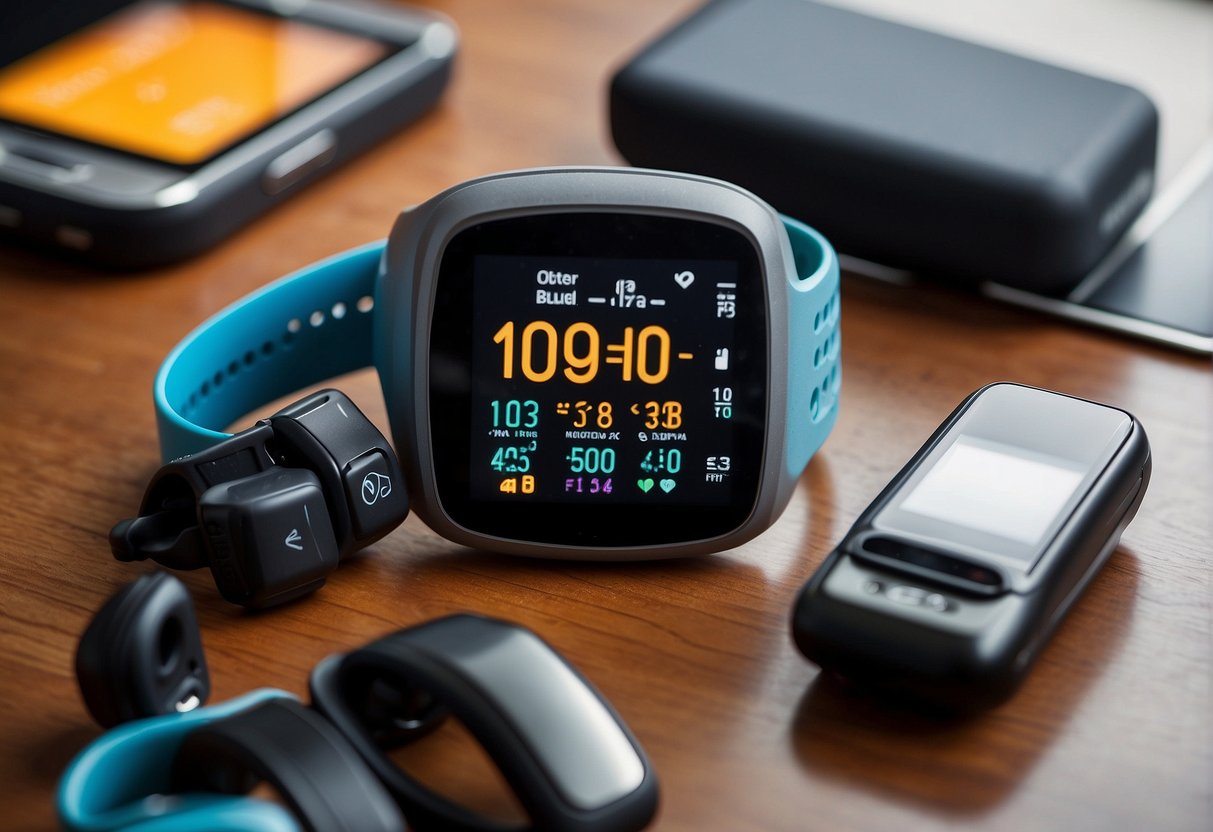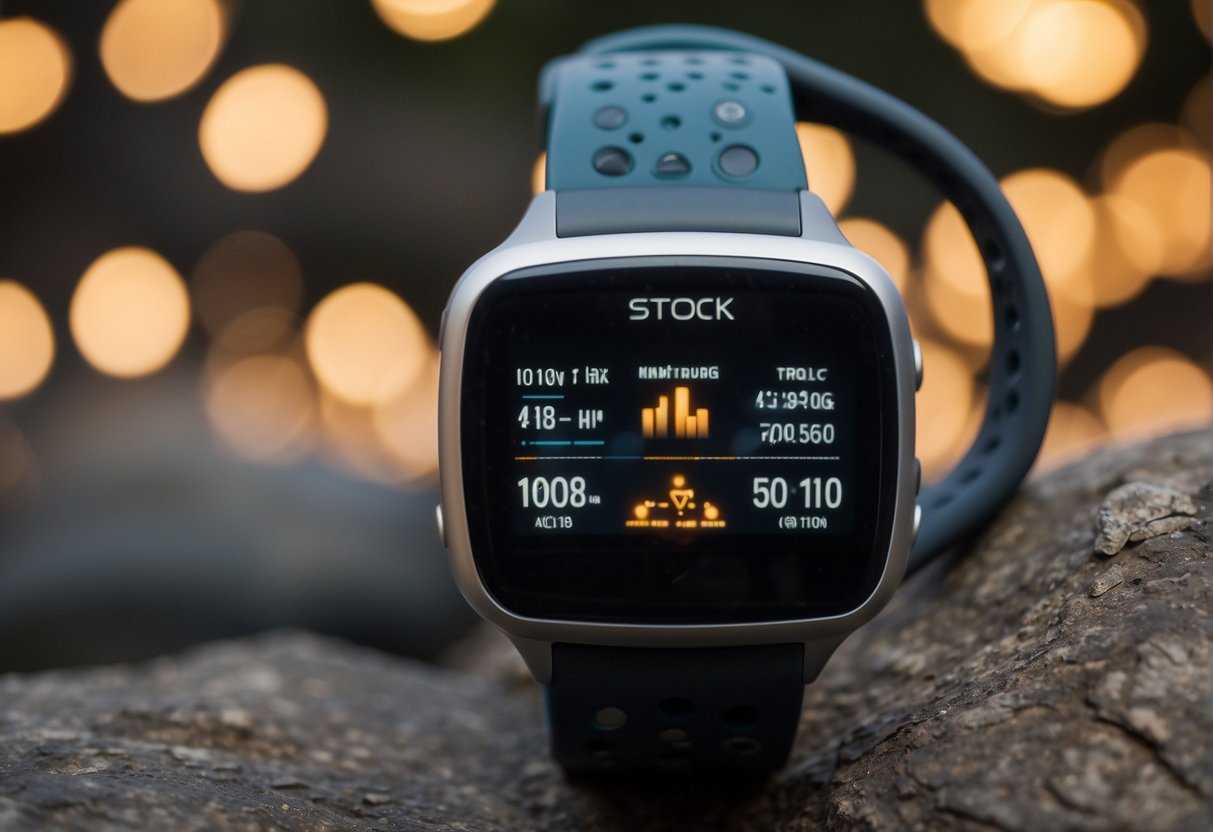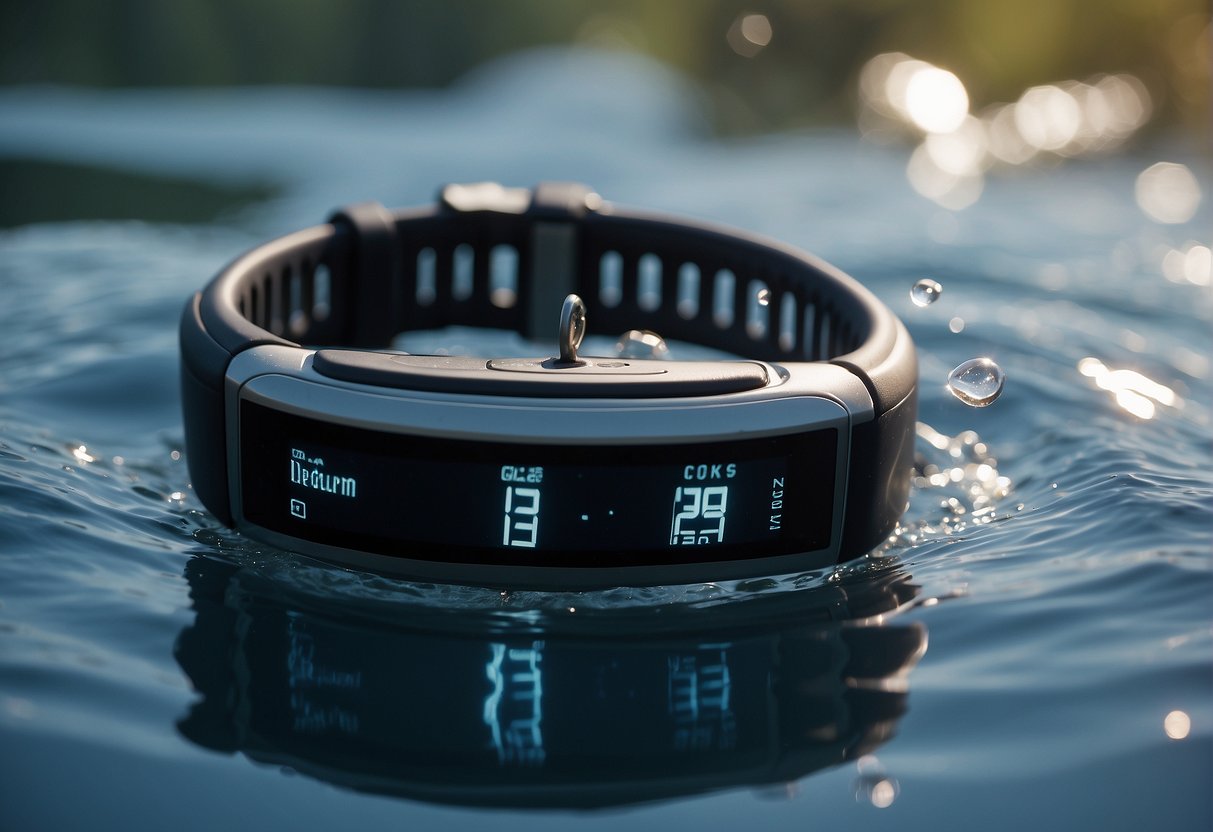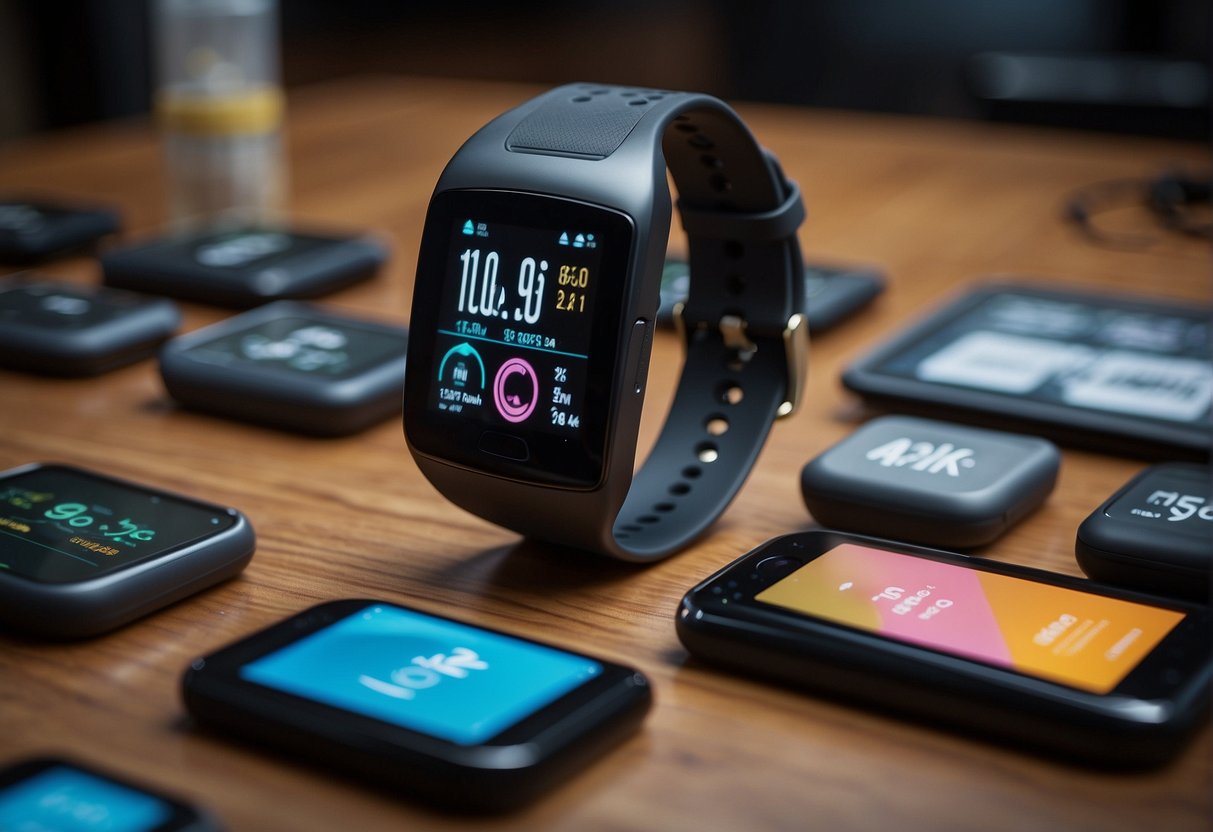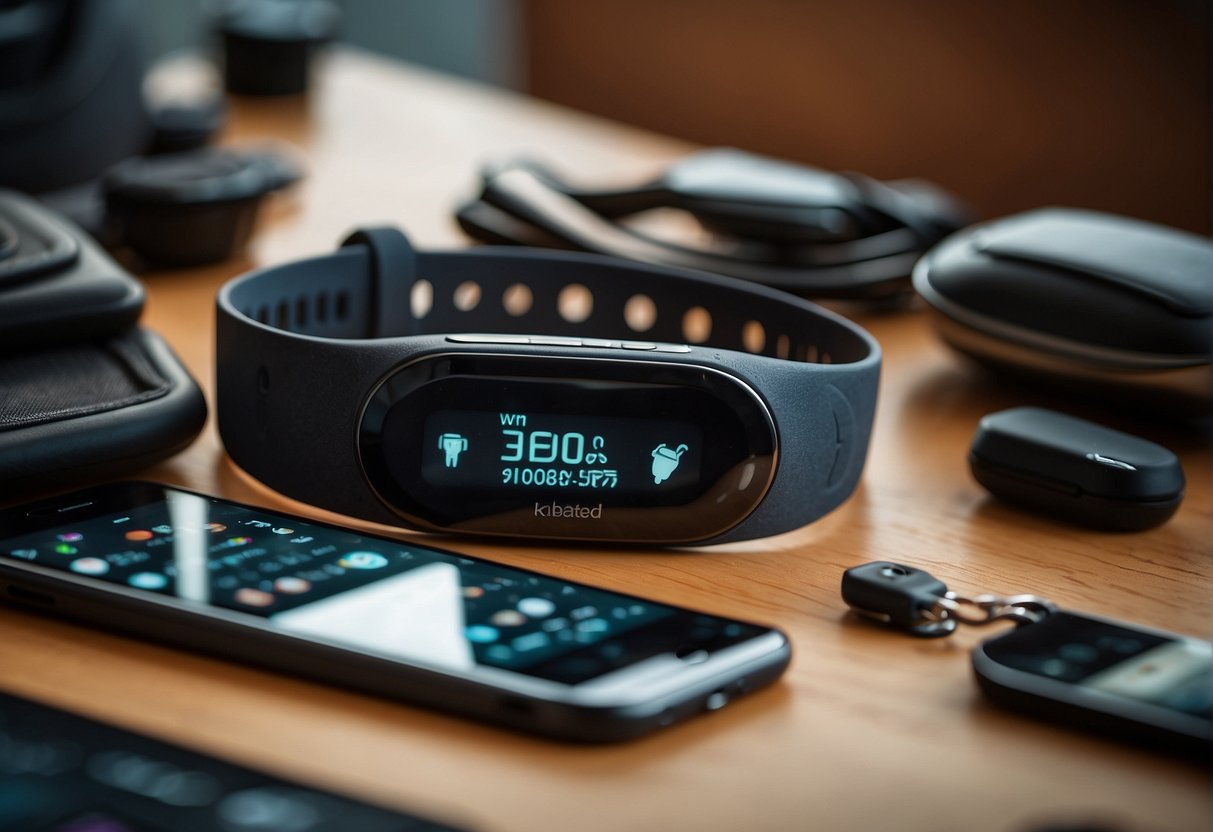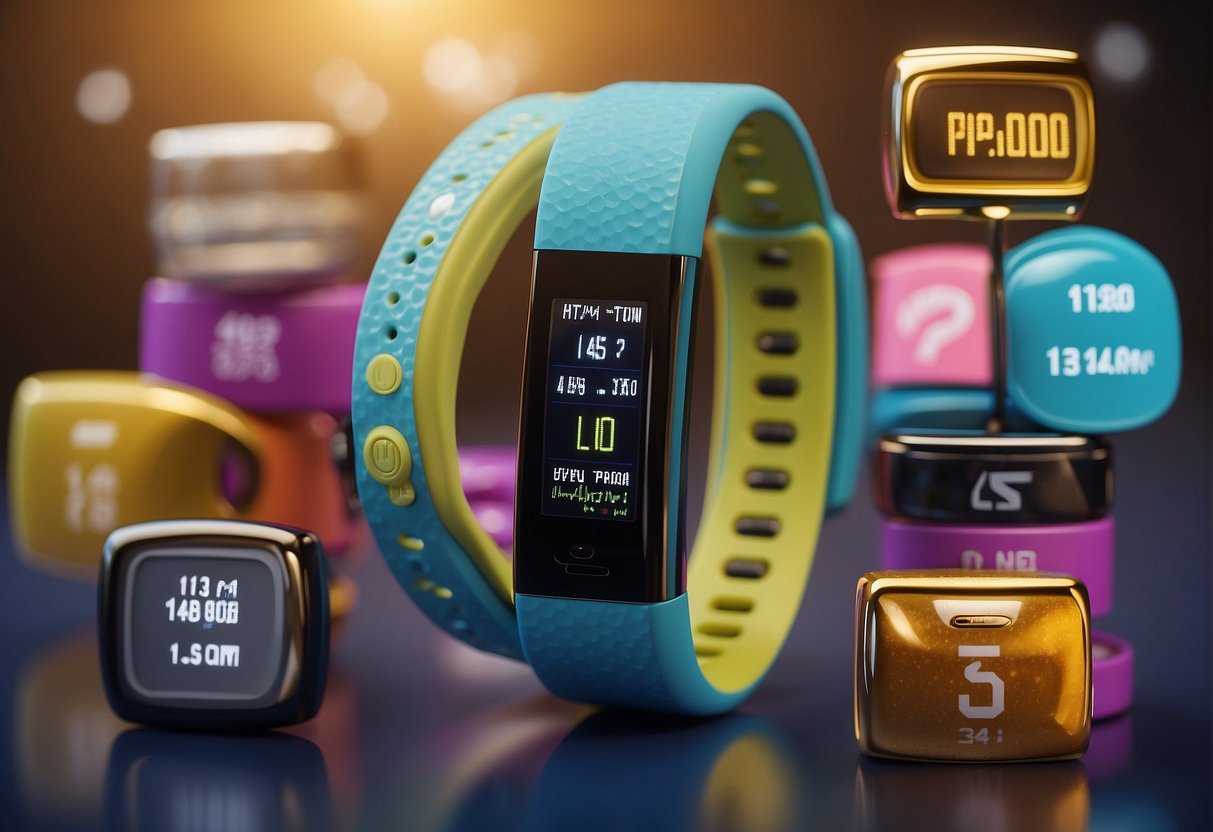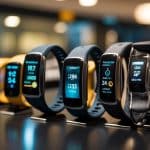In an age where health and fitness are increasingly at the forefront of people’s minds, fitness trackers have surged in popularity, becoming a staple accessory for many. These devices offer a wide array of features to track various aspects of one’s daily life, including steps taken, calories burned, heart rate, and even sleep patterns. As the market floods with numerous models and brands, choosing the right fitness tracker can be a daunting task. It necessitates balancing several factors such as design, comfort, compatibility with other devices, and your specific health and fitness goals.
Selecting a fitness tracker is not just about its looks or the brand name behind it: the functionality and reliability of the device are critical to its effectiveness. Users need to consider how accurately a tracker measures the data it claims to track and how it fits into their lifestyle in terms of battery life and charging convenience. The connectivity of the device to other smart devices and the ability to receive notifications may also influence the decision-making process. Furthermore, durability, water resistance, and the overall value for the price are considerations that can affect buyer satisfaction in the long run.
Key Takeaways
- Choosing a fitness tracker requires considering design, comfort, and device compatibility.
- Accuracy, battery life, and health features play significant roles in the decision process.
- Evaluating durability, connectivity, and price ensures long-term satisfaction with the purchase.
Understanding Fitness Trackers
Fitness trackers offer an array of functionalities to monitor various aspects of physical activity and health, making them versatile tools for personal wellness.
Key Features and Functions
Fitness trackers typically encompass a variety of features to monitor daily activities. Heart rate sensors track cardiovascular activity, providing insights into workout intensity and overall heart health. They often count steps to gauge physical activity levels throughout the day. Additionally, many include sleep tracking to help understand sleep patterns and quality. Advanced models may have built-in GPS for mapping out runs and tracking distance with precision. Notifications for calls and texts, along with stress tracking capabilities, are also common, integrating wellness with connectivity. Sensors in these devices are tailored for various activities, including swimming, being waterproof and tracking swim laps.
- Heart rate monitoring
- Step counting
- Sleep tracking
- GPS capability
- Notifications
- Stress tracking
Types of Trackers
Fitness trackers can be categorized based on their complexity and the type of wearables they are. Basic models primarily focus on steps, sleep, and heart rate, while more sophisticated ones include a robust array of sensors and features designed for specific sports, like swimming. They range from simple clip-ons and wristbands to more advanced wristwatch-like designs.
- Basic: steps, sleep, heart rate
- Advanced: additional sensors, sport-specific
Fitness Tracker vs. Smartwatch
While fitness trackers and smartwatches can share similar features, their primary functions differ. A fitness tracker is dedicated to health and activity monitoring, often providing a detailed analysis of workout data, stress levels, and health metrics. Smartwatches, in contrast, offer a broader suite of applications, often functioning as an extension of a smartphone. They usually include fitness tracking as one of many features, alongside app integration, calls, and more sophisticated on-wrist notifications.
- Fitness Tracker: health and activity-focused, detailed metrics
- Smartwatch: multi-functional, includes fitness tracking
Design and Comfort
When selecting a fitness tracker, it’s essential to consider both the device’s aesthetics and how comfortable it feels on your wrist throughout the day.
Material and Build
The materials used in the construction of a fitness tracker can determine its durability and comfort. Common materials include:
- Silicone: Lightweight and flexible, ideal for sports activities.
- Metal: Gives a more premium look, but can be heavier and less suited for intense workouts.
- Plastic: Often found in more affordable models, plastic is durable but may not feel as high-quality.
Fitness trackers are designed to withstand daily wear, with many offering water resistance, making them suitable for swimming or showering.
Style and Personalization
Fitness trackers come in various styles, and personalization is key for an accessory worn every day.
- Colors: Devices and bands are available in multiple colors, from classic blacks and grays to vibrant hues.
- Interchangeable Bands: Select trackers offer interchangeable bands, which can be switched out to match different outfits or occasions.
- Display: Some trackers have customizable watch faces, allowing for a personalized digital display.
Comfort for Everyday Wear
The comfort of a wearable device is crucial since it is worn all day and often during sleep.
- Weight: A lighter device is typically more comfortable and less obtrusive.
- Adjustability: A band that offers a range of sizes ensures a good fit for any wrist circumference.
- Band Texture: A smooth texture prevents irritation during prolonged use.
When trying on a fitness tracker, one should ensure it sits snugly against the skin but not so tight as to cause discomfort or impede circulation.
Device Compatibility
When selecting a fitness tracker, ensuring device compatibility with the user’s smartphone is crucial. This encompasses how well it integrates with different operating systems, the features offered by its companion app, and the level of third-party app support.
Android and iOS Integration
Fitness trackers should seamlessly integrate with both Android and iOS platforms to cater to a broad user base. For Android users, devices often require Android 6.0 (Marshmallow) or later. On the other hand, iPhone users typically need a device running iOS 11 or newer. Compatibility ensures that features like notifications, music control, and activity syncing happen without issues.
Companion App Features
Each fitness tracker comes with a companion app designed to enhance the user experience. App features should include:
- Activity tracking and history
- Health and fitness data analysis
- Personalized coaching and goal setting
- Device customization options
iOS and Android users should check for compatibility on the app store listings to ensure full functionality. The app’s integration with built-in health platforms like Apple Health or Google Fit can provide a more holistic health management ecosystem.
Third-Party App Support
Third-party app support is critical for users wanting to connect their fitness tracker with broader health and fitness tools. This includes:
- GPS apps like Google Maps for route tracking
- Diet tracking apps
- Specialized training apps
Support for these apps allows users to customize their health and fitness routines by integrating with the tools they already use, whether they are navigating a new running route or logging dietary information. Compatibility with third-party apps can significantly enhance the user’s experience beyond the basic features of their fitness tracker.
Health and Fitness Features
When selecting a fitness tracker, it’s crucial to consider the variety of health and fitness features that track daily activity levels and provide insights into overall wellness.
Activity and Workout Tracking
Fitness trackers offer comprehensive activity and workout tracking, including the step count and distance covered. They typically feature pre-programmed workouts and can record various types of exercise, from walking to swimming, ensuring users can tailor their fitness goals accordingly.
- Step count
- Distance tracking
- Pre-programmed workout modes
- Exercise type recognition
Heart Rate Monitoring
Heart rate monitoring is at the core of most fitness trackers, allowing users to measure their beats per minute in real-time. Continuous heart rate monitoring provides valuable data that can inform training intensity and recovery needs. Additionally, some devices include stress tracking by analyzing heart rate variability.
- Real-time heart rate data
- Training intensity guidance
- Recovery insights
- Stress level assessment
Advanced Health Metrics
Modern trackers go beyond basic activity metrics and offer advanced health features such as sleep tracking, which monitors sleep patterns and quality. Blood oxygen saturation (SpO2) sensors and electrocardiogram (ECG) functions detect blood oxygen levels and heart rhythm irregularities, respectively. Features addressing women’s health, like menstrual cycle tracking, are increasingly common, providing a holistic overview of health.
- Sleep quality analysis
- Blood oxygen levels (SpO2)
- ECG for heart rhythm irregularities
- Menstrual cycle tracking
By assessing these health and fitness features, individuals can find a fitness tracker that aligns with their health goals and supports their wellness journey.
Accuracy and Reliability
When selecting a fitness tracker, the precision of sensor data and GPS tracking are critical for reliable performance and accurate feedback.
Sensor Accuracy
Fitness trackers rely on various sensors to monitor activities and health metrics. Heart rate sensors, for instance, should provide consistent and precise readings. Manufacturers often employ advanced algorithms to ensure the accuracy of measurements like steps taken, calories burned, and floors climbed.
- Heart Rate: Optical sensors should maintain accuracy even during intense exercise.
- Step Count: Accelerometers must filter out non-step movements to avoid overcounting.
- Calories Burned: Calculations based on heart rate and movement data should reflect true energy expenditure.
GPS Precision
The GPS feature in fitness trackers is essential for mapping outdoor activities and providing stats such as pace, distance, and elevation.
- Signal Lock: Quick GPS signal acquisition is vital for accurate tracking from the start.
- Route Accuracy: The ability to precisely track a user’s route affects the reliability of distance measurements.
- Elevation: For activities like hiking, accurate altitude data can enhance the tracking experience.
GPS performance can vary due to device quality, signal interference, and environmental factors.
Battery and Charging
When selecting a fitness tracker, understanding the battery life expectancy and the charging methods and speed is crucial. These factors impact the device’s convenience and usability.
Battery Life Expectancy
Fitness trackers’ battery life can vary greatly, ranging from a day to several weeks on a single charge. Devices with long battery life tend to have less frequent charging needs, which may be convenient for users. Various factors determine battery longevity, such as display type, usage patterns, and additional features like GPS and heart rate monitoring.
- Standard Models: Up to 5 days
- Advanced Models with GPS: 1-2 days
- Simplified Bands: Over a week
Charging Methods and Speed
The charging methods for fitness trackers often include:
- USB Charging: Commonly using a proprietary cable.
- Docking Stations: Allowing the device to charge when placed on them.
- Wireless Charging: Found in select models for convenience.
Charging speed is essential as it determines how quickly a device can be powered up and ready for use. Most trackers fully charge within 1-2 hours, but this can be longer for devices with larger batteries or faster for those with quick charging capabilities.
- USB and Docking Stations: 1-2 hours for a full charge
- Wireless Charging: May vary, typically slightly slower than wired methods
Connectivity and Notifications
Modern fitness trackers offer more than just health metrics; they are an extension of one’s smartphone. This convenience is defined by how well a device syncs data and delivers notifications.
Smartphone Integration
Most fitness trackers are designed to seamlessly integrate with a smartphone. They use Bluetooth connectivity to pair with the user’s mobile device, enabling a wide range of features. For instance, users can often access Google Wallet directly from their wrist, making it easy to process payments without the need for physical cards or cash.
Receiving Alerts and Messages
Users expect to receive notifications directly on their fitness tracker. Notifications for calls, texts, and app alerts can be customized per user preference. Some devices even allow for quick replies, while others offer voice commands through integrations with services like Google Assistant. The immediacy and convenience of having alerts sent to the wrist are a fundamental consideration for potential buyers.
Durability and Water Resistance
When selecting a fitness tracker, understanding its durability and water resistance is vital. These characteristics dictate how well the device will withstand the rigors of daily wear, including exposure to water.
Materials and Resistance
Materials: The materials used in the construction of a fitness tracker greatly influence its durability. Most devices feature a silicone wristband and a plastic or metal casing. Higher-end models may offer stainless steel or titanium casings for increased durability.
- Silicone wristbands are popular for their flexibility and comfort.
- Metal casings, such as stainless steel or titanium, enhance durability and offer a sleek look.
Resistance Ratings: Water resistance in fitness trackers is typically indicated by an IP (Ingress Protection) or ATM (atmospheres) rating.
- IP67 devices can withstand immersion in water up to 1 meter for 30 minutes.
- IP68 devices are suitable for continuous submersion in water.
- ATM ratings, such as 5ATM, signify that the device can resist pressure equivalent to a depth of 50 meters.
Swimming and Outdoor Use
Swimming: Fitness trackers designed for swimming will often have higher water resistance and are explicitly marketed as swim-proof.
- Swim-proof trackers usually have a minimum water resistance of 5ATM.
- They often include specific features for tracking swimming metrics such as stroke count and laps.
Outdoor Use: For those who engage in outdoor sports and activities, a robust fitness tracker is essential.
- Devices rated IP68 or with high ATM ratings can withstand harsh weather conditions, from rain to snow.
- Outdoor enthusiasts should look for features like UV resistance and temperature tolerance to ensure the device’s longevity.
Price and Value
When considering a fitness tracker, one must weigh the initial cost against the value it provides, ensuring an investment that matches their budget and fitness goals.
Budget Considerations
Finding a balance between affordability and functionality is key. Fitness trackers vary widely in price, typically ranging from $30 to $300 and up. Consumers should identify their available budget before starting their search. The market offers budget-friendly options under $50, which often track basic metrics like steps and calories. For individuals with a moderate budget between $100 and $150, more advanced features become available such as heart rate monitoring and GPS tracking.
Cost vs. Features
The cost of a fitness tracker is directly related to the features and brand. For example, a unit with a price tag of $200 or more will typically offer a comprehensive suite of features such as:
- Sleep tracking
- Advanced heart rate metrics
- Swimming resistance
- Integration with third-party apps
It is crucial for buyers to compare features against price to determine which features they deem necessary. While some may prioritize sophisticated health metrics, others might find value in basic tracking coupled with a long battery life. It’s important to check for hidden costs like subscription services that might be required for full feature utilization.
Brand and Market Options
When selecting a fitness tracker, consumers have a variety of brands to consider, each bringing its unique set of features and innovations to the market. Understanding the landscape of popular brands and the breadth of market variety can guide buyers to a device that best fits their needs.
Popular Brands
Garmin, Fitbit, and Apple are prominent leaders in the fitness tracker industry, recognized for their reliable and feature-rich devices. Garmin offers a wide range of wearables catering to different fitness levels, notable for their GPS capabilities and robust battery life. Their products often appeal to serious athletes and outdoor enthusiasts.
Fitbit has established a wide user base with models like the Fitbit Charge, known for its user-friendly interface and comprehensive health tracking features. It stands out for its balance of functionality and affordability, making it one of the best fitness trackers for everyday use.
Apple’s Apple Watch SE enhances the fitness tracking experience with its seamless integration with iOS, impressive ecosystem, and extensive health monitoring capabilities. Apple’s offering is for those who seek a cohesive tech experience alongside fitness tracking.
Market Variety and Innovations
The market is not just limited to these top players; brands like Samsung have made significant strides with products like the Samsung Galaxy Watch 6, which is poised to integrate fitness with smart living. The wearable landscape is constantly evolving, with innovations such as enhanced battery life, more accurate biometric sensors, and streamlined designs.
Emerging brands like WHOOP also disrupt the market with targeted devices such as the Whoop 4.0, which focuses on recovery and strain tracking. This particular segment of wearables is tailored for enthusiasts looking to optimize their athletic performance through detailed analytics and personalized insights.
Frequently Asked Questions
When selecting a fitness tracker, consumers often have questions about features, value, and usage. This section aims to address these inquiries with precise information.
How do I choose a good fitness tracker?
One should look for a tracker with features that match their personal health goals, whether it’s step counting, sleep monitoring, or heart rate tracking. It’s essential to consider the device’s compatibility with one’s smartphone or computer for seamless data syncing.
What factors should I consider when looking for a fitness tracker with an altimeter?
For those seeking elevation tracking, the accuracy of the altimeter is paramount. Additionally, the durability of the tracker in various weather conditions and battery life should be considered, as outdoor activities can vary in duration and intensity.
Which fitness tracker offers the best value for money?
The best value for money comes from a fitness tracker that provides a balance between functionality and price. A device offering a comprehensive set of features like heart rate monitoring, sleep tracking, and a user-friendly interface, at a competitive price point, would typically be considered a good value.
What features differentiate fitness tracker bracelets from watches?
Fitness tracker bracelets often focus on simplicity and comfort, usually offering basic tracking capabilities without advanced smartwatch features. In contrast, fitness tracker watches may provide more detailed notifications, onboard apps, and larger displays, suitable for those seeking more connectivity.
How consumer reports influence the choice of a fitness tracker?
Consumer reports provide insights into user satisfaction, device reliability, and the after-sales service of different brands. These reports can guide potential buyers towards making informed decisions based on performance and user experiences.
What are the most important features to look for in a fitness tracker for sports and daily activity tracking?
For sports and day-to-day activity tracking, key features to look for include a robust set of sensors for movement, heart rate, and possibly GPS for distance tracking. Additionally, water resistance can be crucial for sports, and battery life should support daily activity without frequent charging.
Conclusion
When selecting a fitness tracker, individuals should prioritize their personal needs and fitness goals. The market offers a variety of options, each with its own set of features suited for different types of activities and levels of engagement.
Key Considerations:
- Battery Life: Choose a device with a battery life that accommodates your daily routine without frequent recharges.
- Water Resistance: For swimmers or those engaging in water-based activities, water resistance is a critical feature.
- Accuracy: Opt for trackers known for precise tracking to ensure reliable data.
- Comfort: Select a device that fits comfortably on your wrist, suitable for long-term wear.
Additional Features:
- Some models offer heart rate monitoring, sleep tracking, and integration with smartphones.
- The compatibility with third-party apps can be a deciding factor for those who rely on specific software for their fitness journey.
Buyers should also consider future-proofing their purchase by choosing a device with software that receives regular updates, enhancing longevity and value for money. Price, while an important factor, should not overshadow the importance of finding a tracker that meets the user’s functional requirements.
In summary, a careful assessment of features against personal needs will lead to a satisfactory purchase. Remember, the best fitness tracker is the one that aligns with one’s lifestyle and motivates continued use.

